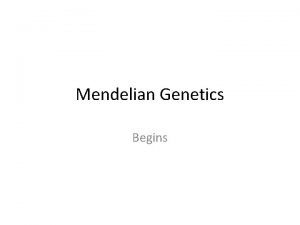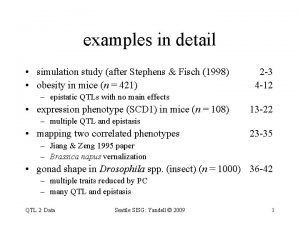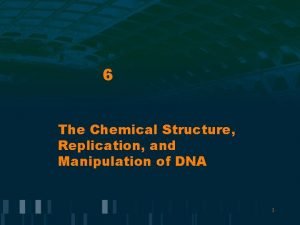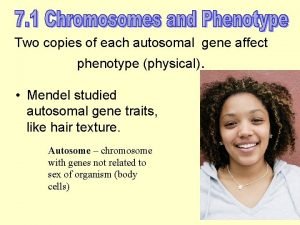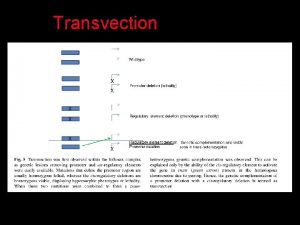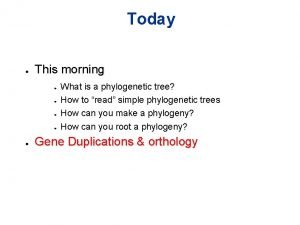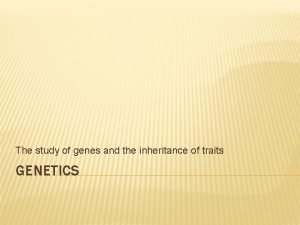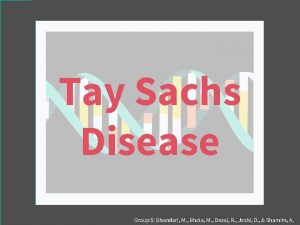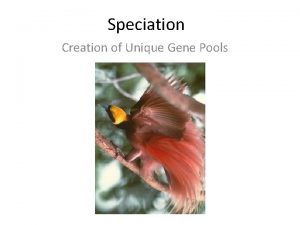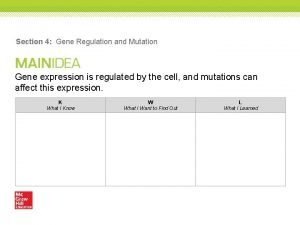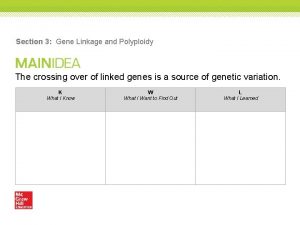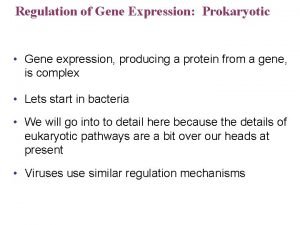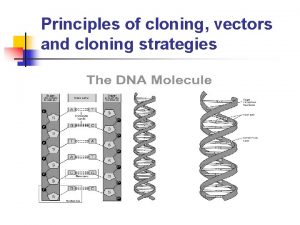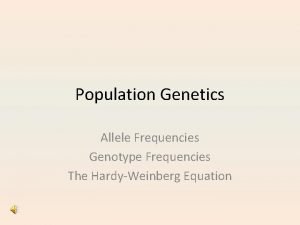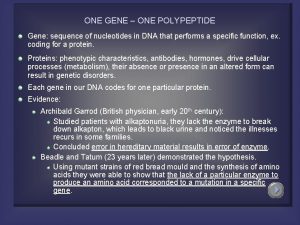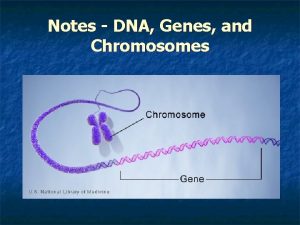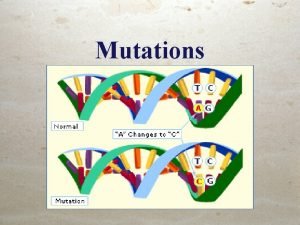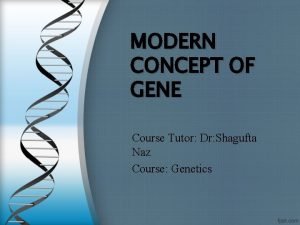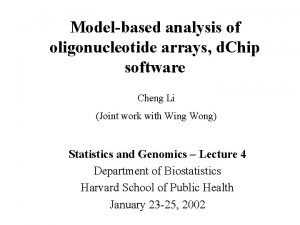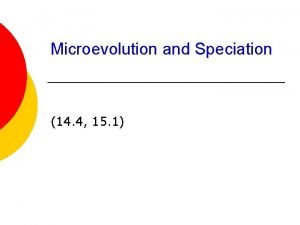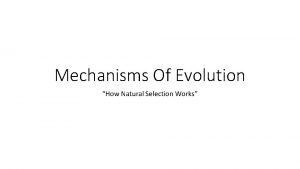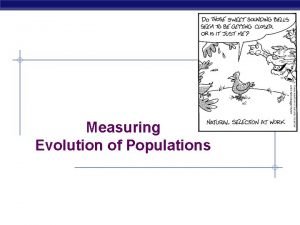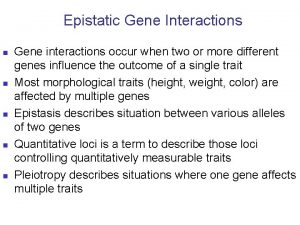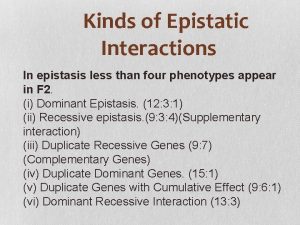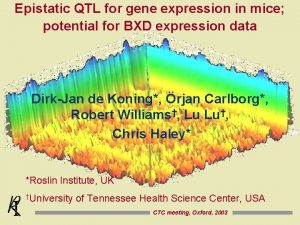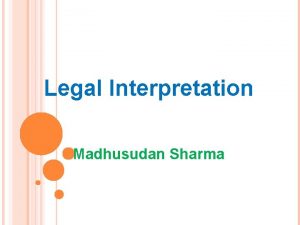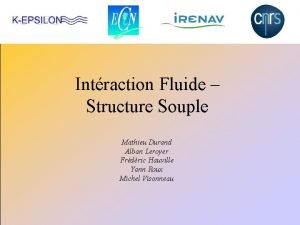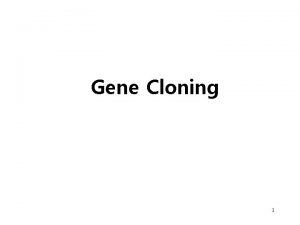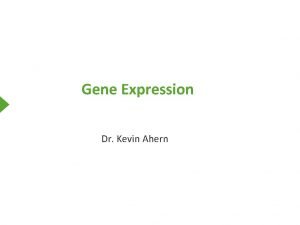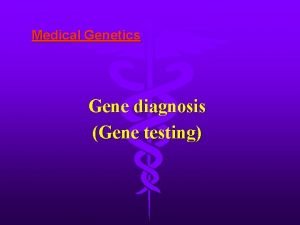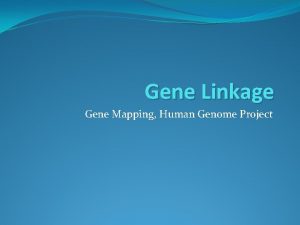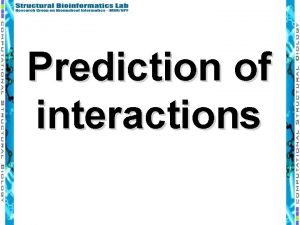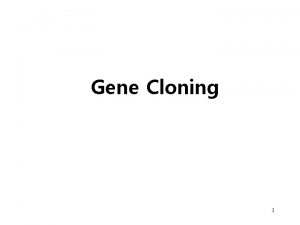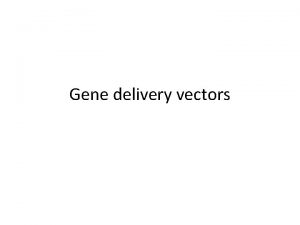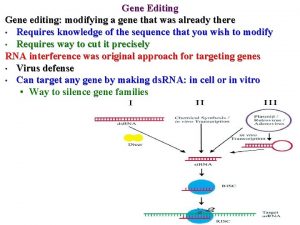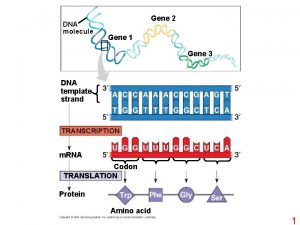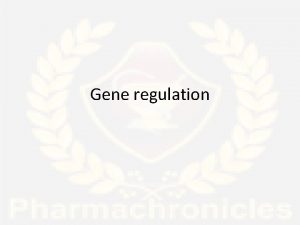EPISTATIC GENE INTRACTION Introduction Chemical Interpretation Kinds of









































- Slides: 41

EPISTATIC GENE INTRACTION

Introduction Chemical Interpretation Kinds of Epistasis (і) (iii) (iv) (vi) Dominant Epistasis. Recessive epistasis Duplicate Recessive Genes Duplicate Dominant Genes Duplicate Genes with Cumulative Effect Dominant Recessive Interaction References

� Epistasis is Greek word meaning standing over. � It was first used in 1909 by Bateson to describe a masking effect. � An interaction between a pair of loci, in which the phenotypic effect of one locus depends on the genotype at the second locus. Genes whose phenotype are Expressed-epistatic altered or suppressed-hypostatic

Difference between dominance and epistasis Dominance Epistasis Involves intra-allelic gene interaction. Involves inter-allelic gene interaction. One allele hides the effect of other allele at the same gene pair. One gene hides the effect of other gene at different gene loci.

Chemical interpretation: �A gene is a chemical determiner. � Gene products interact with the environment and factors such as temperature, light, hormones and enzymes. � If there is any problem or mutation in the intermediates, it can lead to another phenotype and hence disturb the Mendelian ratios.


Example of two genes that pigmentation in Drosophila. Effects � The function in eye genes are vermilion (v) and cinnabar (cn). � Flies that are mutant for cn lack xanthommatin. They have bright red eyes because of the drosopterin. � Mutant v flies also lack xanthommatin but for a different reason. In these flies the pathway is blocked because there is no functional V enzyme.

Kinds of Epistatic Interactions In epistasis less than four phenotypes appear in F 2. (і) Dominant Epistasis. (12: 3: 1) (ii) Recessive epistasis. (9: 3: 4)(Supplementary interaction) (iii) Duplicate Recessive Genes (9: 7) (Complementary Genes) (iv) Duplicate Dominant Genes. (15: 1) (v) Duplicate Genes with Cumulative Effect (9: 6: 1) (vi) Dominant Recessive Interaction (13: 3)

Dominant Epistasis. (12: 3: 1) � Dominant allele (eg. , A) of one gene hides the effect of allele of another gene (eg. , B) and expresses itself phenotypically. � The B allele (hypostatic) will be expressed only when gene locus A contains two recessive (aa) alleles. � Thus, the genotype AA BB or Aa Bb and AA bb or Aa bb produce the same phenotype � genotype aa BB or aa Bb and aa bb produce two additional phenotype. � This type of dominant epistasis modifies the classical ratio of 9: 3: 3: 1 into 12: 3: 1

Epistatic Hypostatic Phenotypic alleles Expression aa bb b aa BB, Bb B Bb, bb A AA, Aa

Example: Studied in summer squash (Cucurbita pepo) Common fruit colors-white, yellow &green White (W) is dominant over colored squash Yellow (Y) is dominant over green squash Pure breeding white fruited variety is crossed with the double recessive green variety, F 1 hybrids are all white When the hybrids are selfed-white, yellow &green fruited plants arise in the ratio of 12: 3: 1

The effect of dominant gene ’Y’ is masked by the dominant gene ’W’ (epistatic gene) P WWYY X wwyy (white) ↓ (green) F 1 Ww. Yy (white) (selfed) F 2 White: Yellow: Green 12 : 3 : 1 ♂/♀ WY Wy w. Y wy WY WWY y Ww. Y Y Ww Yy Wy WWY y WWyy Ww. Yy Wwy y w. Y Ww. Yy ww. YY ww. Y y wy Ww. Yy Wwyy ww. Yy wwy y

Recessive epistasis. (9: 3: 4) (Supplementary interaction) � Recessive allele (aa) of one gene locus hides the effect of another gene locus (BB, Bb or bb) and expresses itself phenotypically. � The alleles of B locus express themselves only when epistatic locus has dominant alleles (eg. , AA or Aa). � This will modify the ratio 9: 3: 3: 1 to ratio 9: 3: 4

Epistatic Hypostatic Phenotypic alleles Expression aa BB, Bb, bb a AA, Aa BB, Bb B AA, Aa bb b

� In horses, brown coat color (B) is dominant over tan (b). � However, how that gene is expressed in the phenotype is dependent on a second gene that controls the deposition of pigment in hair. � The dominant gene (C) codes for the presence of pigment in hair, whereas the recessive gene (c) codes for the absence of pigment.


Duplicate Recessive Genes (9: 7) (Complementary Genes) � Both the genes loci have homozygous recessive alleles and both of them produce identical phenotype. � Both dominant alleles are necessary to produce a different phenotype. e. g. : AABB, Aa. Bb, in all these combinations. � Both the dominant alleles (A and B) are present and they will produce a different phenotype. � Whereas aa. BB or bb. AA, in which the other dominant allele is absent, produces the normal phenotype.

Epistatic alleles aa AA, Aa, aa AA, Aa Hypostatic Phenotypic alleles Expression BB, Bb, bb No phenotype bb production BB, Bb Phenotype due to dominant

Bateson and Punnett observed that when two white flowered varieties of sweet pea, Lathyrus odoratus were crossed, F 1 progeny had coloured flowers. When F 1 was selfed, the F 2 ratio showed the presence of both coloured and white flowered varieties in the ratio 9: 7. In man, deaf mutism is complementary gene dependent, depending upon two dominant genes A and B, the presence of both of them is responsible for normal hearing and speech.


In this case dominant alleles on both locus are required hence wherever A and B both are present they result into purple effect masking the white. This is because A and B alleles modified the colorless precursor by showing their effects


� The purple pigment in corn requires that two enzymes (controlled by two dominant alleles) must be active for the pigment to form. � Two white varieties of corn showing the genotypes AAbb and aa. BB, will produce a ratio of 9/16 purple and 7/16 white ears, depending upon the nine different possible arrangements of the chromosomes (and alleles) for these characteristics.

Duplicate Dominant Genes. (15: 1) � The dominant alleles of both the genes produce the same phenotypic effect giving the ratio 15: 1. � At least one of the dominant allele is necessary for the phenotypic effect. e. g. AABB, Aa. Bb, Aabb, aa. BB, aa. Bbgive one phenotype. � In the absence of all the dominant genes (only in case of aabb), the recessive phenotype will be expressed. � The duplicate genes are also called pseudoalleles

Epistatic alleles aa Hypostatic alleles bb Phenotypic expression Another phenotype aa BB, Bb Same AA, Aa bb phenotype AA, Aa Bb, Bb

As observed by G. H. Shull, the seed capsules of Shepherd’s purse (genus Capsella) occur in two different shapes, i. e. triangular and top shaped. When F 1 individuals were self crossed, the F 2 generation showed plants with triangular and top shaped capsules in the ratio 15: 1 (A and B) would produce plants with triangular-shaped capsules. aabb would produce plants with top shaped capsules. F 2 phenotypic ratio 15(triangular) 1(Top shaped).

P: AABB (triangular) × aabb (top-shaped) Aa. Bb (triangular) F 1 : AB Ab a. B Ab AB Ab a. B ab AABB AABb Aa. BB Aa. Bb (triangular) AABb AAbb Aa. Bb Aabb (triangular) Aa. BB Aa. Bb aa. BB aa. Bb (triangular) Aa. Bb Aabb aa. Bb aabb (triangular) (top-shape)

Duplicate Genes with Cumulative Effect. (9: 6: 1) � Both the dominant non allelic alleles, when present together, give a new phenotype, but when allowed to express independently, they give their own phenotypic expression separately. � In the absence of any dominant allele, the recessive allele is expressed.

Epistatic Hypostatic Phenotypic alleles expression aa bb Neither a nor b aa BB, Bb B only AA, Aa bb A only AA, Aa Bb, Bb A+B mutually supplement

In pigs S and s are allelic genes; S giving sandy colour ss giving white colour. A non-allelic gene R also gives sandy colour (same as S) but when both the dominant genes interact together, they give red colour. Non-allelic gene does not interact with ss

P: SSrr (sand × ss. RR (sandy) Ss. Rr (red) F 1 : F 2 : SR Sr s. R Sr SR Sr s. R sr SSRR SSRr Ss. RR Ss. Rr (red) SSRr SSrr Ss. Rr Ssrr (red) (sandy) Ss. RR Ss. Rr ss. RR ss. Rr (red) (sandy) Ss. Rr Ssrr ss. Rr ssrr (red) (sandy) (white)

Dominant Recessive Interaction (13: 3) � The dominant allele (A), either in homozygous or heterozygous condition, of one gene and the homozygous recessive allele (bb) of other gene produces the same phenotype. � In F 2 generation, progenies having A (homozygous or heterozygous) or bb (homozygous) will not allow the C gene to be expressed. � Genotype AABB, AABb, Aa. Bb and Aabb produce same phenotype and the genotype aa. BB, aa. Bb and aabb produce another but same phenotype.

Epistatic Hypostatic Phenotypic alleles expression aa Bb, BB, bb a doesn’t inhabit B or b AA, Aa Bb, Bb , bb A inhibit B or b

� In Leghorn fowl, the white colour of feather is formed by CCII (due to the presence of epistatic gene I). � Similarly in Plymouth Rock fowl the white colour of feather is formed by ccii (due to the absence of dominant C gene). � Therefore C is suppressed by inhibitor gene both in dominant (I) and recessive (ii) condition.

P: × CCII (White Leghorn) ccii (White Plymouth Rock) Cc. Ii F 1 : (white) CI Ci c. I ci CCII CCIi Cc. II Cc. Ii (white) CCIi CCii Cc. Ii Ccii (white) (colored) Cc. II Cc. Ii cc. II cc. Ii (white) Cc. Ii Ccii cc. Ii ccii (white) (colored) (white)

Example: Interaction involves an inhibitory factor which by itself has no phenotypic effect But, when present in the dominant form prevents or inhibits the expression of another dominant gene eg : . Malvidin in primula flowers Malvidin is a O-Methylated anthocyanin responsible for the blue pigments in Primula polyanthus plant

Synthesis of malvidin (blue) is controlled by gene K In recessive state(k), malvidin is not synthesized Production is suppressed by gene D, found at completely different locus D allele is dominant to K allele

KKdd x kk. DD (blue) (white) ↓ Kk. Dd (selfed) (white) ↓ ♂ / ♀ KD Kd k. D kd KD KKD d Kk. D D Kk. Dd Kd KKD d KKdd Kk. Dd Kkdd k. D Kk. Dd kk. DD kk. Dd kd Kk. Dd Kkdd kk. Dd kkdd

Kk. Dd genotype will not produce malvidin due to the presence of D allele Thus, white & blue colored flowers producing plants are obtained in the ratio of 13: 3 Also known as dominant


References: � Hartl, D. L. , & Jones, W. E. , (1998) “Genetics Principles and Analysis” ed: 4 th Jones and Bartlett Publishers International London, UK, pp: 19, 20, 61 -63 � Miko, I. , (2008) Epistasis: Gene interaction and phenotype effects. Nature Education 1(1) � Richards, J. E. & Hawley, R. S. , (2010) “ The human genome” ed: 3 rd Academic Press, pp: 31 � Verma, P. S. , & Agarwal, V. K. , (2004) “Cell biology, Genetics, Molecular Biology, Evolution and Ecology” ed: 24 th S. Chand Company Ltd, Ram Nagar, New Delhi. Pp: 45 -56
 Epistatic inheritance
Epistatic inheritance Epistasis def
Epistasis def Epistatic
Epistatic Gene by gene test results
Gene by gene test results Chapter 17 from gene to protein
Chapter 17 from gene to protein How does interpretation b differ from interpretation a
How does interpretation b differ from interpretation a Chemical composition of gene
Chemical composition of gene Nnrims
Nnrims Section 2 classifying chemical reactions worksheet answers
Section 2 classifying chemical reactions worksheet answers Chapter 7 review chemical formulas and chemical compounds
Chapter 7 review chemical formulas and chemical compounds Chemical reactions section 2 classifying chemical reactions
Chemical reactions section 2 classifying chemical reactions Section 1 chemical changes
Section 1 chemical changes 7-1 practice problems chemistry answers
7-1 practice problems chemistry answers Are kc and kp equal
Are kc and kp equal Thermodynamics chapter 2
Thermodynamics chapter 2 Gene woodard
Gene woodard Difference between autosomes and sex chromosome
Difference between autosomes and sex chromosome Hox gene mutation in drosophila
Hox gene mutation in drosophila Species tree
Species tree Are brown eyes a dominant gene
Are brown eyes a dominant gene Sfzp music
Sfzp music Tay
Tay Hox gene mutation in drosophila
Hox gene mutation in drosophila H. gene slottow
H. gene slottow Hemophilia punnett square worksheet
Hemophilia punnett square worksheet Section 4 gene regulation and mutation
Section 4 gene regulation and mutation Section 3 gene linkage and polyploidy
Section 3 gene linkage and polyploidy Prokaryotic gene expression
Prokaryotic gene expression Repressible operon
Repressible operon Gene cloning process
Gene cloning process Allelic frequencies
Allelic frequencies Pike freshman center
Pike freshman center Gene symbols
Gene symbols One gene one polypeptide
One gene one polypeptide Chromosome vs dna vs gene
Chromosome vs dna vs gene Founder effect
Founder effect Any mistake or change in the dna sequence
Any mistake or change in the dna sequence Modern concept of gene
Modern concept of gene Gene chip software
Gene chip software Macroevolution vs microevolution
Macroevolution vs microevolution Evolutionary mechanisms
Evolutionary mechanisms What is gene flow and genetic drift
What is gene flow and genetic drift
